New Pac52 Class Gets Legs
Published on March 14th, 2017
There was a time when the royalty of our sport gravitated toward the keelboat playground and competed within the scope of measurement rule racing. But with three technical rules – IRC, ORC, and ORR – now fighting for bandwidth in the USA, this segment of competitive sailing hardly has the sizzle to strike a flame.
Custom built boats are now a rarity. It’s not that people don’t enjoy the creative process; they just lack a compelling reason to make the investment. Until now. While the country struggles to unite under a single rule, an ownership group on the west coast is uniting around a single vision: the new Pac52 Class.
“We are very excited for the inaugural year of the Pac52 Class,” reports Class Manager Julie Servais. “With the first four boats on their way, and more potential teams in discussions with the Class, we are putting all of our efforts into ensuring fair and even racing, great parties, great media coverage, and lots of fun and good camaraderie between the teams.”
Here’s a summary of a report now posted on the Class website:
Introduction
With a hull shape based on the current TP52 Class, but with a lighter engine, more stability and a taller mast supporting more sail area, the Pac52s will provide level high performance monohull racing. As well as being faster and more powerful, the Pac52s are also offshore capable boats, with some teams opting to participate in the Transpac Race this summer as well as other coastal and offshore races. The dual purpose capabilities of these boats gives the owners more value and makes the class more sustainable long term.
Class Rules
Teams have been working together to build a rulebook that ensures the boats are even, that the competition is fair, and that the costs are controlled. This rulebook has turned into the Pacific 52 Class Association Bylaws and Rules version 5.0, which is the latest edition and is considered to be very close to final by all the teams. The one section still in progress are the exact Box Rule parameters, which are being developed as the new boats arrive and the actual measurements are taken.
Measurement
To save costs, the class is using the ORR measurement and rating system to validate each boat’s parameters. Rather than have Class measurers and a much more extensive box rule, the Class agreed to have a ‘Level Rating Rule’ as well as a ‘Box Rule’. Boats must comply by fitting within the Box Rule parameters and they also may not rate any faster than the agreed upon maximum ORR TCF number.
There is also a set a maximum upwind righting moment to encourage the boats to not mode themselves into a ‘fast upwind/slow downwind’ configuration to get to the top mark first. The ORR rating limit uses the Windward/Leeward 60/40 VPP calculation which weighs the upwind performance heavier than the downwind performance, again deterring teams reducing downwind speed potential in trade for minute upwind gains.
Team Composition
The Class will impose a crew limitation to seven Group 3 (pro) sailors, which is about half of the team. There will also be an ‘Owner-Driver Rule’ which does allow each team to have up to three designated Alternate Helmsmen, but these Alternates must be approved by a vote among the teams.
The intent is not to specifically ban professional sailors from driving, but rather to evaluate each alternate based on perceived ability and also their temperament as a driver. The preference is for owners to drive their boats and not enlist ‘hot shot’ drivers to try and gain an advantage. Alternate helmsmen are intended to be there to relieve the owners from time to time, to drive the boats at full potential, but to respect the other teams and give proper courtesy to the rules while racing.
Crew Weight Limit
While there is no set weight limit for the Class, each team will decide their own crew weight limit and have to sail within that limitation. This is due to the ORR VPP which uses crew weight as part of the performance calculation of each boat.
More crew weight typically makes your rating faster but also adds to the Upwind Righting Moment which is limited. Due to other factors affecting these outcomes, such as keel weight, beam, sail area, etc., each team is allowed to determine their own crew weight limit.
For example, a boat that has a very heavy bulb and is very stiff upwind might have to declare a very light crew weigh limit in order to fit into the Box Rule. They can either sail this way with fewer crew, or they could choose to lighten their bulb to give them more room to take more crew on the rail. Weigh-ins at the regattas will ensure the teams are sailing within their self-declared limitation.
Limitations on Sails
A limitation is set on how many new sails can be added to a team’s racing inventory each year. A ‘Sail Card’ will list the sails a team has measured in and is allowed to race with. Teams may have other sails not on the sail card (such as practice sails, or sails used for other racing such as beer cans or offshore races), but they can only compete in Pac52 Class Races with sails on their Sail Card. The limitations allow more sails to be added during a team’s first year in the class as they will need build up their base inventory. Subsequent years have tighter limitations.
Support Boats
Support boats, which can provide on-water coaching, carry extra sails to be swapped out between races as wind conditions change, and to carry extra equipment such as tools, lunches, drinks, etc., are an expensive advantage that the Class sought to minimize. Class rules prohibit contact between the Class boat and any support boat from the preparatory signal of the first race of the day until the finish of the last race of the day. Exceptions will apply in case of damage or safety, or by unanimous agreement.
Full report… click here.


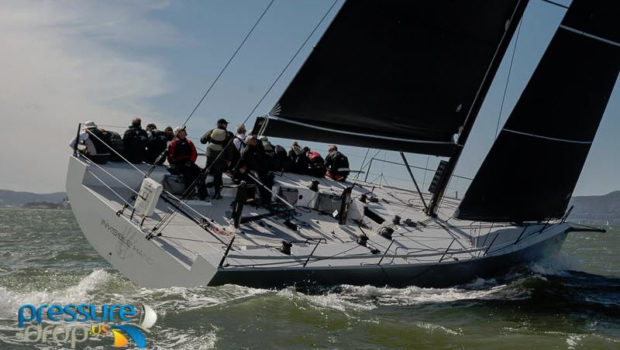

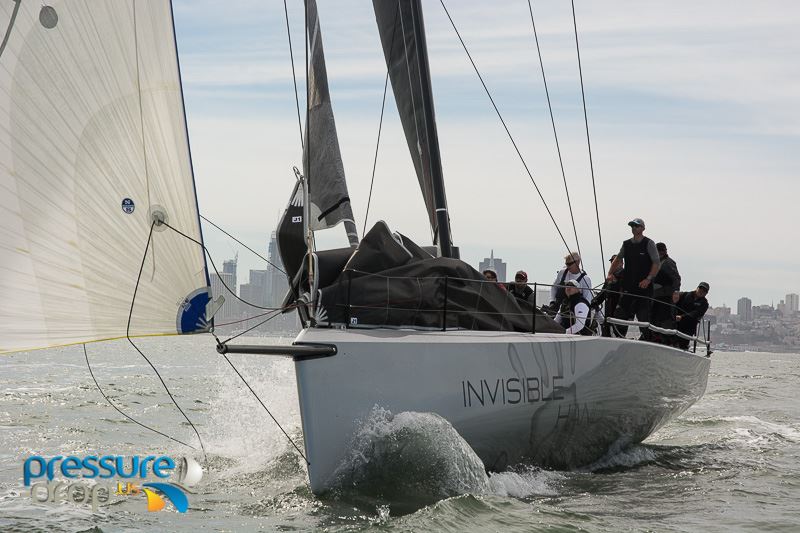

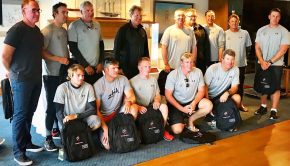
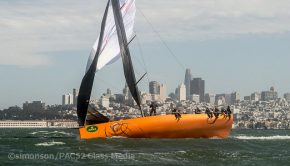
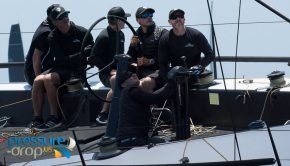
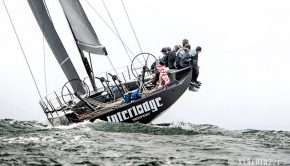
 We’ll keep your information safe.
We’ll keep your information safe.